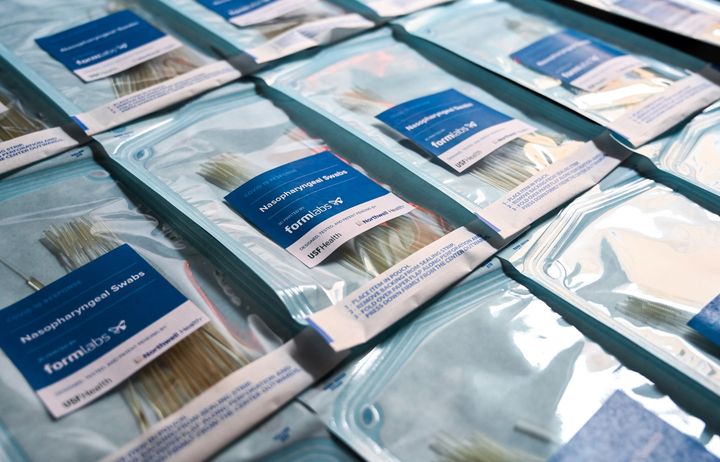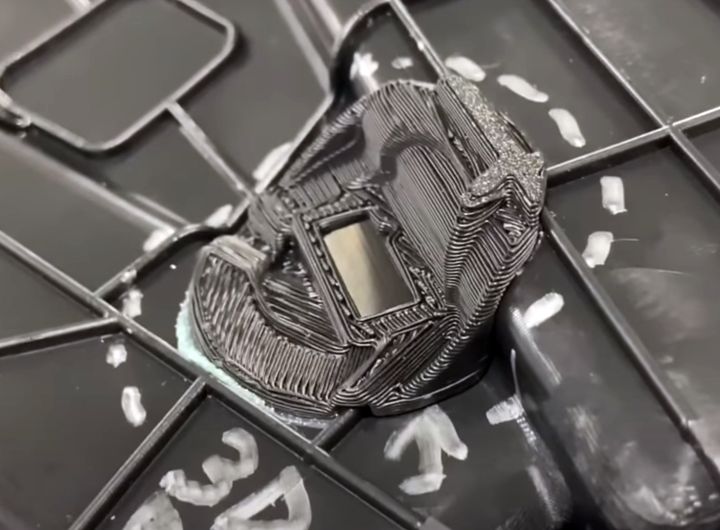
The emergence of 3D printing as a manufacturing solution during the COVID-19 crisis now implies bold actions be taken.
3D Printing During COVID-19
During the initial stages of the crisis 3D printer operators worldwide realized they could attempt to make up some of the shortage of critical healthcare equipment by 3D printing parts on demand. While some bravely attempted 3D printing complex items such as ventilators, the community eventually settled on items that could be effectively produced, such as face shields, ear savers and similar items.
That’s what happened at the community level. Meanwhile, something similar but perhaps more important occurred at the industrial level. Several 3D printing companies turned their resources towards the problem and began mass manufacturing components. Examples include Formlabs and consortium partners 3D printing literally millions of test swabs, while Photocentric made similar quantities of face shields.
These and similar projects undertaken by other 3D printing companies caused a transformation to occur. These companies essentially created new manufacturing lines of business to handle the sudden demand.
In a very real sense, they BECAME general product manufacturers — beyond their 3D printing products. This is a significant transformation.
Manufacturing with 3D Printing
For many years 3D printing technology was considered “not good enough” for end-use part manufacturing, and not without reason: early materials and 3D printers were simply unable to produce robust parts that could survive much beyond basic prototyping functions.
That’s all changed in the last few years as multiple new engineering materials have been unleashed on the community from the major chemical companies, who finally noticed the 3D printing industry. These new materials, coupled with advances in 3D printer design, allowed the production of end-use parts.
But even so, the attitude towards production with 3D printers remained much the same: it’s for prototyping.
Because of the incredible, near-instant response by some companies during the height of the crisis, it has been demonstrated beyond any doubt that 3D printing is now a proper manufacturing option, at least in a restricted set of circumstances. Some restrictions are the case for any manufacturing equipment, just to be clear.
3D Print Manufacturing Applications
We’ve known for some time that 3D printing is indeed valuable for low-volume manufacturing. That occurs when the cost of producing a smaller number of parts is less using 3D printing than it is using traditional production approaches. The number of units varies by situation, obviously, but anecdotally, we’ve been seeing the break-even point slowly rise.
However, that equation is based on the assumption that your only goal is to produce useful parts at the lowest cost.
Now the game is changed in that there’s another goal: producing parts quickly.
This could be the Achilles heel of traditional manufacturing, which tends to take some time before it can get powered up to produce huge numbers of units at low cost.
Meanwhile, 3D printing can produce parts as soon as you send the 3D model to the device. There’s virtually no set up time as compared to other making technologies such as injection molding.
Future Manufacturing With 3D Printing
Now that the manufacturing game has changed with the addition of a speed-to-market factor, there are new possibilities for placement of 3D printers.
One very intriguing idea we’ve recently heard is the concept of having an “emergency factory” bolted on to hospitals. This would be a specialized makerspace-like operation that could, when required, produce simple parts to overcome immediate shortages at the hospital. Hospital labs are increasingly incorporating 3D printers that can make simple or medical-grade parts.
Could it be possible that in the future EVERY hospital might be required or obligated to have such a facility?

Another fascinating manufacturing application was also recently demonstrated, although it was not related to COVID-19: temporary assembly line gap-filing. In a recent story we showed how Tesla used 3D printers to keep their production line moving, even though a part (likely) was wrongly designed. Their onsite 3D printing tech was used to quickly instantly produce a usable new design that kept their vehicle assembly line operating.
These are but two examples of a new window into the manufacturing world that has suddenly opened in 2020 for 3D printing.
If I were running a 3D printing company, I’d be thinking very hard of ways my equipment could be used in these and similar manufacturing scenarios.
Which 3D printer company is going to be the first to offer a turnkey hospital fabrication lab, for example? I think we could find the answer soon.
